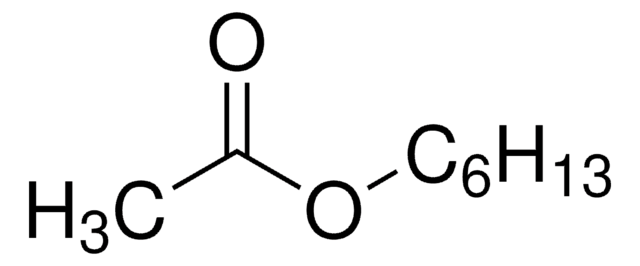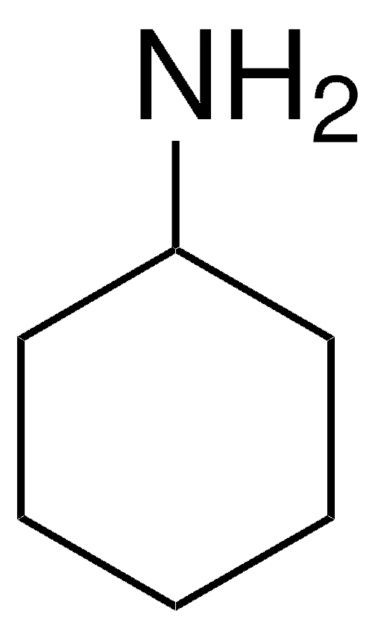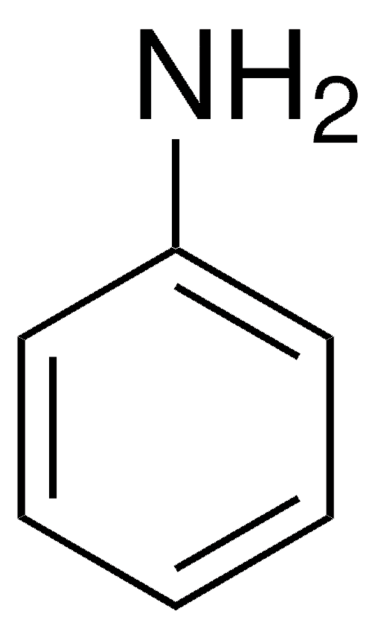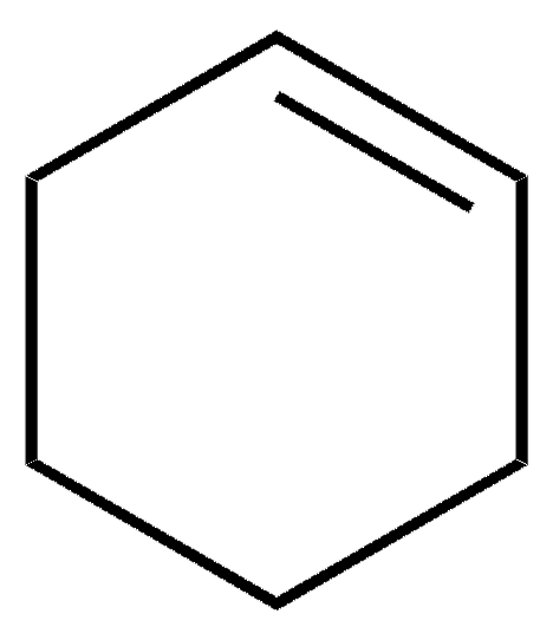108154
Hexyl acetate
99%
Sinônimo(s):
Capryl acetate
About This Item
Produtos recomendados
Nível de qualidade
Ensaio
99%
índice de refração
n20/D 1.409 (lit.)
p.e.
168-170 °C (lit.)
pf
−80 °C (lit.)
densidade
0.87 g/mL at 25 °C (lit.)
grupo funcional
ester
cadeia de caracteres SMILES
CCCCCCOC(C)=O
InChI
1S/C8H16O2/c1-3-4-5-6-7-10-8(2)9/h3-7H2,1-2H3
chave InChI
AOGQPLXWSUTHQB-UHFFFAOYSA-N
Procurando produtos similares? Visita Guia de comparação de produtos
Categorias relacionadas
Descrição geral
Aplicação
Ações bioquímicas/fisiológicas
Palavra indicadora
Warning
Frases de perigo
Declarações de precaução
Classificações de perigo
Aquatic Chronic 2 - Flam. Liq. 3
Código de classe de armazenamento
3 - Flammable liquids
Classe de risco de água (WGK)
WGK 1
Ponto de fulgor (°F)
132.8 °F - closed cup
Ponto de fulgor (°C)
56 °C - closed cup
Equipamento de proteção individual
Eyeshields, Faceshields, Gloves, type ABEK (EN14387) respirator filter
Escolha uma das versões mais recentes:
Já possui este produto?
Encontre a documentação dos produtos que você adquiriu recentemente na biblioteca de documentos.
Os clientes também visualizaram
Global Trade Item Number
| SKU | GTIN |
|---|---|
| 108154-25ML | 4061838679390 |
| 108154-1L | 4061838679314 |
| 108154-500ML | 4061838679444 |
Nossa equipe de cientistas tem experiência em todas as áreas de pesquisa, incluindo Life Sciences, ciência de materiais, síntese química, cromatografia, química analítica e muitas outras.
Entre em contato com a assistência técnica










